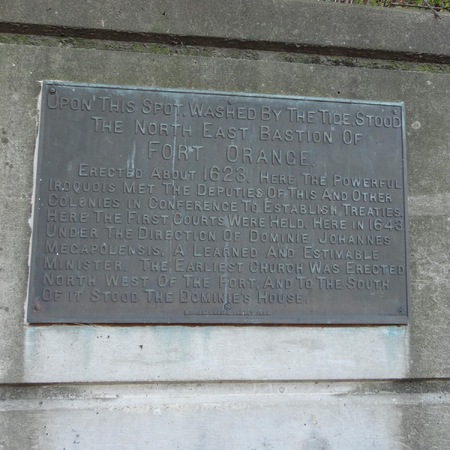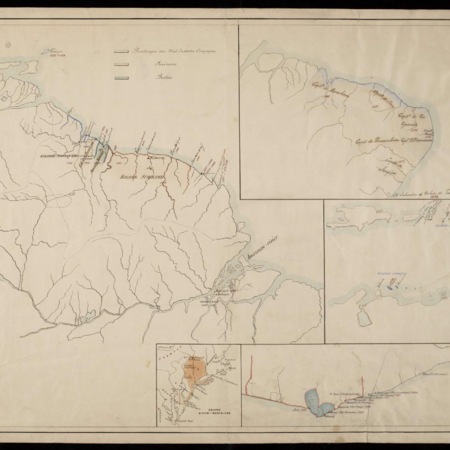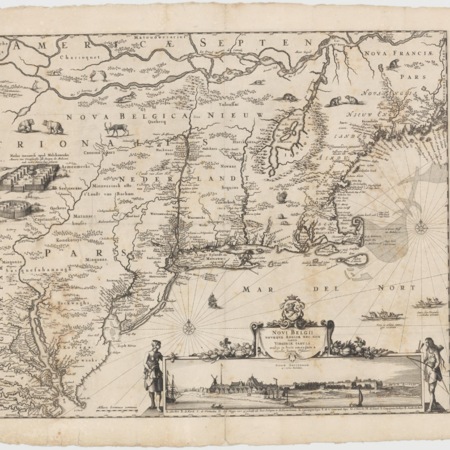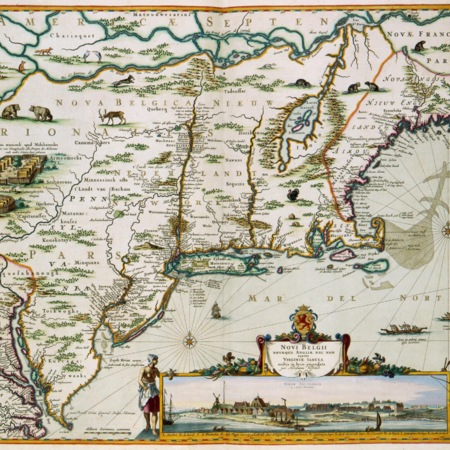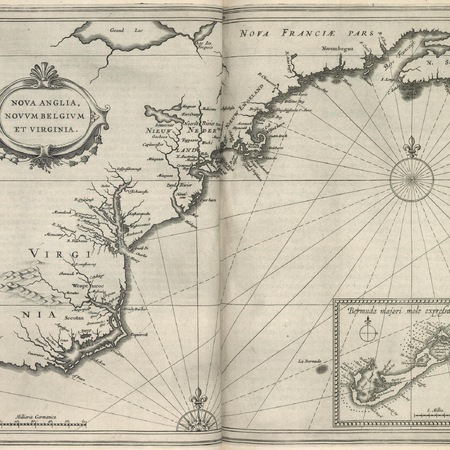After a few years of intermittent and itinerant trade by private merchants, the West India Company assumed control of New Netherland. One of its first measures was to send over a group of colonists, which upon arrival was divided over four locations. A 1626 description by Van Wassenaer (see documentation) establishes the shape of Fort Orange, i.e. a four-pointed European style fort, but its size remains unspecified in the early sources. Research by Paul Huey (see under documentation) indicates that the rectangular interior area of the fort measured almost fifty meters, while the outside dimensions were less than 55 meters from north to south.
For the 1630s, sources on Fort Orange are scarce. On the ca. 1632 “Gillis van Scheyndel Map” of Rensselaerswijck (New York State Library, not currently included in this database) , Fort Orange is indicated by a four-pointed enclosure, surrounded by what appears to be a moat or a ditch. It is likely that during the 1630s and 1640s Fort Orange’s earthworks, even though the points were reinforced with wooden stakes, suffered the same kind of erosion as those of Fort Amsterdam. French Jesuit Isaac Jogues’s remarks that the fort was “basty de pieux” was translated by Thwaites as “built of logs.”(Thwaites 261-262
see under documentation) It is conceivable that the curtains of Fort Orange were built vertically, in the form of palisades, while the points were constructed with horizontal beams.
Even though Jogues considered Fort Orange to be “small,” it was still large enough to contain several buildings. The small houses on the site were most likely the lodgings of the common soldiers, with the larger house providing accommodation for the higher officials. Other measures taken in 1648 reveal more details of Fort Orange, for instance that it was surrounded by “a dry moat.” The plan for repairing the fort included surrounding “it with a wall of stone, instead of timber, so as to avoid the annual expense and repairs.” A start had already been made with by quarrying local stone, but the extent to which the plan was put into effect remains uncertain.
During the First Anglo-Dutch War the directors in Amsterdam were concerned about the defensive condition of New Netherland. At the very least, the walls of Fort Orange protected the building inside the fort against high water. During the 1650s a new guardhouse and a courthouse were built, both in brick, and at considerable expense. The courthouse was a strong and substantial house, founded upon two cellars with a stone foundation. The first story was divided into three spaces, including a kitchen of 16 by 21 feet. The upper level was divided into two rooms, the courtroom and an office, each 21 feet square.
By June 1660, just after hostilities with the Esopus Indians had erupted again, Fort Orange was considered beyond repair. The bad state of the fort brought the West India Company in disrepute, La Montagne reported indignantly, as it reflected upon his person as well. The courts of Beverwijck and Rensselaerswijck together with La Montagne had decided to let the old houses stand for the time being and focus on “repairing the bastions at the least expenses and with the greatest speed.” In 1664, when New Netherland was taken over by the English, Fort Orange was renamed Fort Albany. During the brief Dutch reconquest of 1673-1674, its name was Fort Nassau (not te be confused with the earlier fort Nassau slightly downriver on what used to be Castle Island). Despite the continuing efforts to repair it, in 1675 the fort was in such a bad condition that the English governor Edmund Andros decided to abandon it and build a new fort, later named Fort Frederick, on the hill (now Capitol Hill) overlooking the town and further away from the river.
